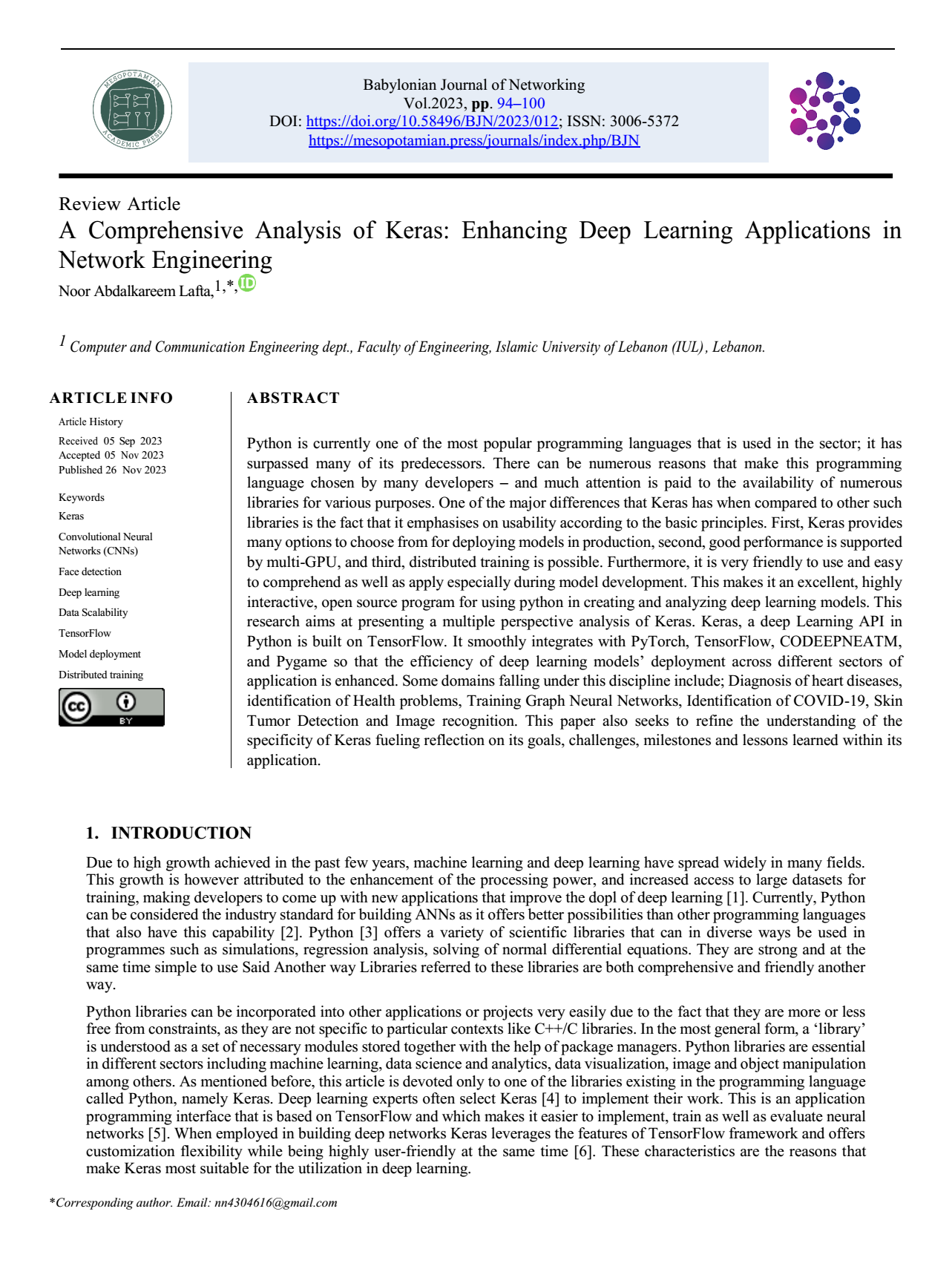A Comprehensive Analysis of Keras: Enhancing Deep Learning Applications in Network Engineering
Main Article Content
Abstract
Python is currently one of the most popular programming languages that is used in the sector; it has surpassed many of its predecessors. There can be numerous reasons that make this programming language chosen by many developers – and much attention is paid to the availability of numerous libraries for various purposes. One of the major differences that Keras has when compared to other such libraries is the fact that it emphasises on usability according to the basic principles. First, Keras provides many options to choose from for deploying models in production, second, good performance is supported by multi-GPU, and third, distributed training is possible. Furthermore, it is very friendly to use and easy to comprehend as well as apply especially during model development. This makes it an excellent, highly interactive, open source program for using python in creating and analyzing deep learning models. This research aims at presenting a multiple perspective analysis of Keras. Keras, a deep Learning API in Python is built on TensorFlow. It smoothly integrates with PyTorch, TensorFlow, CODEEPNEATM, and Pygame so that the efficiency of deep learning models’ deployment across different sectors of application is enhanced. Some domains falling under this discipline include; Diagnosis of heart diseases, identification of Health problems, Training Graph Neural Networks, Identification of COVID-19, Skin Tumor Detection and Image recognition. This paper also seeks to refine the understanding of the specificity of Keras fueling reflection on its goals, challenges, milestones and lessons learned within its application.
Article Details
Issue
Section

This work is licensed under a Creative Commons Attribution 4.0 International License.
